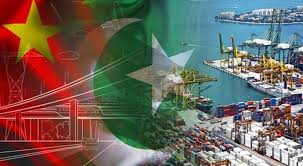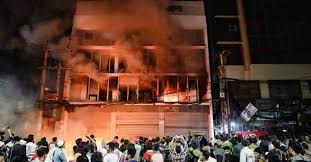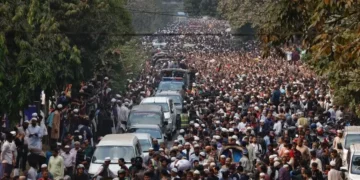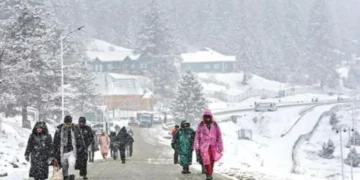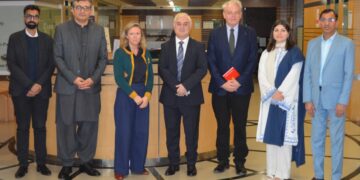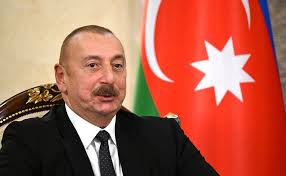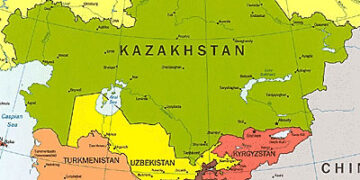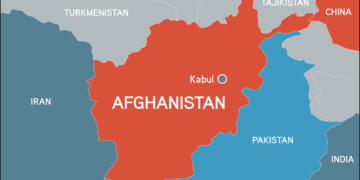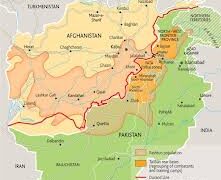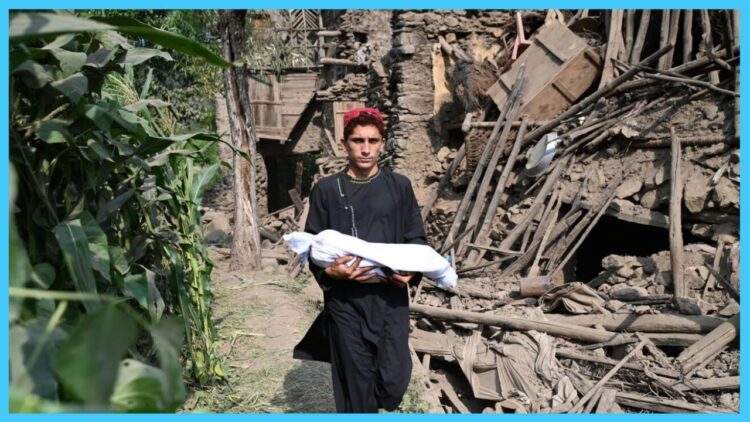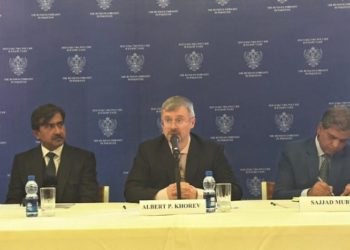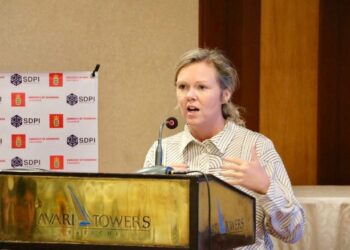KABUL; The death toll from a powerful earthquake that struck eastern Afghanistan has climbed to 1,124, with at least 3,251 injured and more than 8,000 homes destroyed, the Afghan Red Crescent Society said Tuesday, as rescuers continued to dig through the rubble of collapsed houses in remote, mountainous provinces.
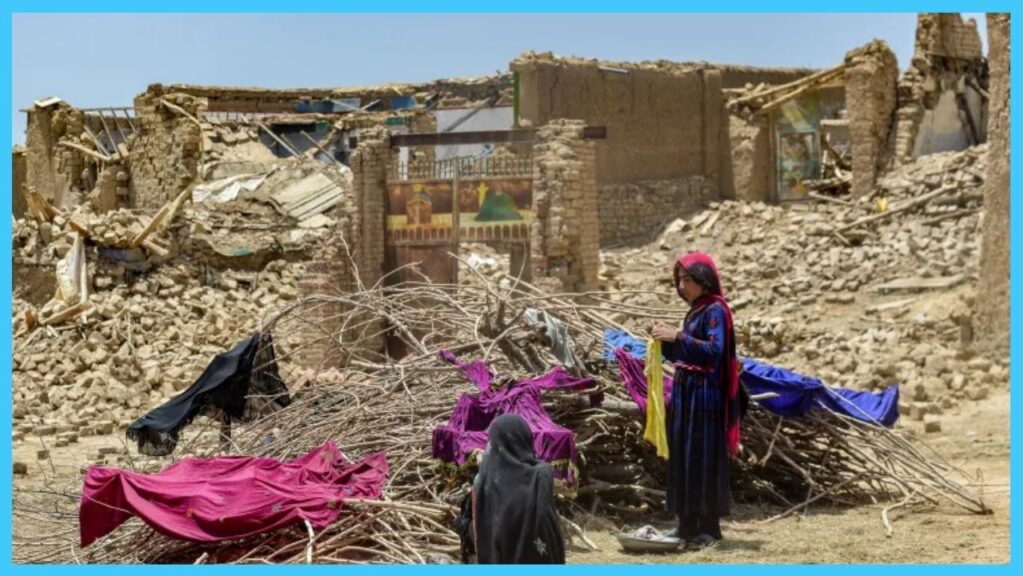
The 6.0-magnitude quake, followed by at least five aftershocks, struck shortly after midnight Sunday near the Pakistan border. According to the United States Geological Survey (USGS), the epicenter was located about 27 kilometers (17 miles) from Jalalabad, at a shallow depth of 8 kilometers, making the tremor particularly destructive.
Desperate Search for Survivors
“Operations continued throughout the night,” said Ehsanullah Ehsan, head of the Kunar Provincial Disaster Management Authority, who confirmed that “injured people are still trapped in distant villages” and urgently need evacuation.
Villagers, many with bare hands, joined rescue workers to clear debris from flattened mud and stone homes built into steep valleys. “I’m searching here, but I didn’t see him,” said Obaidullah Stoman, 26, who had traveled to the village of Wadir to look for a missing friend. “It was very difficult for me to see the conditions here… there is only rubble left,” he told AFP.
White-shrouded bodies of the dead, including children, were laid to rest by grieving families, who recited prayers before burial. Entire villages have been reduced to heaps of earth, while blocked mountain roads left several of the worst-hit communities inaccessible, the UN migration agency told AFP.
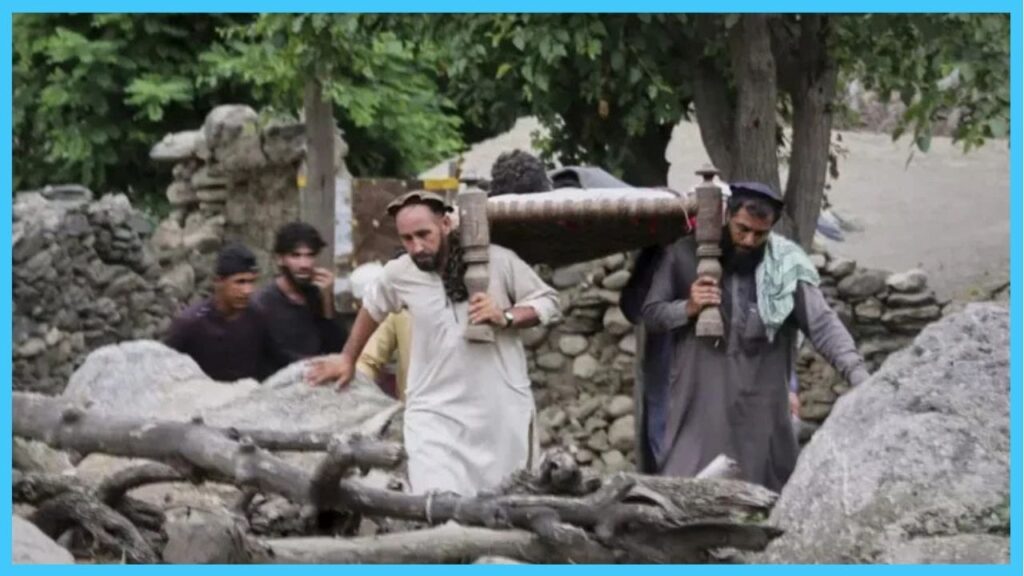
A Country Struggling with Crisis
Afghanistan, one of the world’s poorest nations, remains deeply vulnerable after decades of conflict. Since the Taliban’s takeover in 2021, international aid has dwindled, leaving the disaster response severely underfunded. The situation worsened earlier this year when the United States — previously the country’s largest donor — slashed almost all remaining assistance under President Donald Trump.
In June, the United Nations announced major cutbacks to its global humanitarian programs, citing “the deepest funding cuts ever.” On Monday, UN Secretary-General Antonio Guterres pledged swift action in Afghanistan, promising emergency aid and announcing an initial 5 million dollars contribution.
Taliban and International Response
Taliban officials initially reported 800 deaths and 2,500 injuries in Kunar province, as well as fatalities in Nangarhar and Laghman. Government spokesman Zabihullah Mujahid confirmed dozens of additional casualties in those regions.
“Children and women were screaming. We had never experienced anything like this in our lives,” said Ijaz Ulhaq Yaad, an agricultural department worker in Nurgal district, describing the terror of the quake.
Pope Leo XIV expressed sorrow in a Vatican message, saying he was “deeply saddened by the significant loss of life.”
Vulnerable to Shallow Quakes
Experts note that relatively shallow quakes like Sunday’s cause greater damage, especially in Afghanistan where most people live in fragile, mud-brick houses. Many victims were among the four million Afghans repatriated from Iran and Pakistan in recent years, now forced to rebuild in precarious conditions.
Earthquakes are frequent in Afghanistan, particularly in the Hindu Kush range at the collision of the Eurasian and Indian tectonic plates. The country has faced devastating quakes in recent years: a 6.3-magnitude tremor in Herat in October 2023 killed more than 1,500 people and damaged over 63,000 homes, while a 5.9-magnitude quake in Paktika in June 2022 killed more than 1,000 people and left tens of thousands homeless.
With rescue efforts still underway, aid workers warn that the final toll of the latest disaster could rise further as remote areas become accessible.












